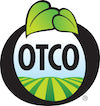Greenpeace Says Sportswear Products are Loaded with Chemicals Toxic to Human Health

A recent report from Greenpeace details a growing cause for concern among exercise enthusiasts: health risks from sportswear.
According to Greenpeace, apparel companies aren’t regulating the chemicals in sportswear items, including dyes, solvents, and polyfluorinated chemicals (PFCs), which make items water, grease and stain-proof. And that’s a big issue because of the friction and sweat common in exercising that could accelerate the body’s absorption of the chemicals.
The Guardian reports that the Greenpeace report “comes after a slew of research” in recent years found a number of potential health risks from exposure to the various chemicals commonly found in sportswear.
“The concentration that we find in clothing may not cause acute toxic problems for the wearer in the short term, but in the long term you never know,” Manfred Santen, toxics campaigner for Greenpeace International in Germany, told the Guardian. “Endocrine disruptors, for example, you don’t know what the impact of long term exposure is on human health.”
According to the Guardian, a 2012 report from the BEUC (the European Consumer Organization), found carcinogens and endocrine-disrupting chemicals in soccer jerseys from nine countries: France, Germany, Italy, Poland, Portugal, Russia, Spain, The Netherlands and Ukraine, which the organization said are particularly of concern because of the ability of the chemicals to enter the skin during physical activity.
Major sportswear companies including Adidas and Nike are featured in the report. Adidas’ status changed from the less desirable “greenwasher” to “trendsetter” for committing to changes including eliminating hazardous chemicals by 2020 and going 99 percent PFC-free by 2017.
Now, Santen says the organization hopes Nike will do more, and he urges consumers to let Nike and other sportswear manufacturers know how important these changes are. “That is the main reason Adidas talks to us: the middle class in China is becoming increasingly concerned about this issue and China is the biggest market for them and will be the biggest consumer market in the coming years,” Santen said.
According to the Guardian, about 10 percent of the more than 2,400 textile-related chemicals Greenpeace notes in the report pose human health risks, but only about one percent of those are actually regulated, particularly in the U.S.
Image: m01229
Leave a comment
Comments will be approved before showing up.


